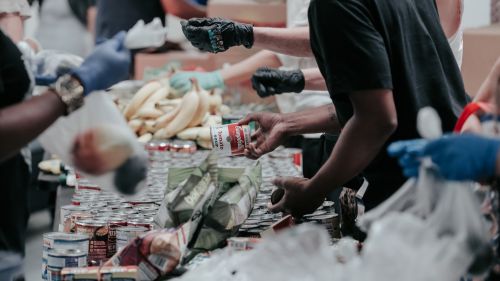Pandemic Offers an Opportunity to Revitalize, Reinforce Local Food Economies

Despite stresses caused by the pandemic there are resources to further develop symbiotic relationships between producers, suppliers, and consumers.
Effects of COVID-19 on Food Supply
The COVID-19 pandemic has dramatically hit the food and agriculture industries across the world with implications set to last the next few years. The stresses in worker safety as well as halt of economic opportunity have resulted in various scenarios, including the rapid closure of food processing plants and dumping of milk and produce, with famers considering even more drastic measures. On the consumer side, escalated unemployment rates have led more individuals and families to pursue nutritional assistance programs, seeking government benefits and food pantries. The interruptions of the supply chain are resulting in food shortages in markets. Already we have seen shortages of staples in food banks, which may continue to grow.
Most of the global food economy is on hold. Yet, we should be taking this pandemic as an opportunity to strengthen and utilize our local food economies. Despite all the stresses present, we do have the resources to further develop symbiotic relationships between producers, suppliers, and consumers.
In response to a greater need in nutrition assistance, elected officials in the United States have urged the U.S. Department of Agriculture (USDA) to provide additional federal funds to their respective states. Thus, the Families First Coronavirus Response Act of 2020 has been developed to approve state agency plans for emergency coverage. 21 states have been approved to operate a Pandemic EBT (P-EBT) Program. Additional approval of state programs would especially support the nearly 30 million children under the National School Lunch Program. How is this an opportunity to support local producers? The EBT program allows users to use SNAP benefits at participating farmers markets and, in recent years, online. These options are even more considerate, now that consumers are revaluating their methods of safely acquiring food and farmers need alternative markets for their products.
For the United States’ producers, the USDA has announced the Coronavirus Food Assistance Program set to provide $16 billion in direct support to farmers and ranchers. While a very proactive response, it ensures neither the regaining of lost markets nor equal distribution of resources. Yet, producers affected by drops in demand have an alternative role in developing local food security. This is the time for producers, especially small to mid-sized, to be establishing donation-based partnerships with their local food banks to accommodate the dramatic rise in clients. Producers preparing to harvest during this time should be connected to gleaning volunteer groups. Gleaning is the act of collecting leftover crops from a farmer’s field. These are typically crops deemed not economically profitable either because of an already fulfilled demand or not meeting commercial grade. Of course, producers should be compensated for these efforts through mechanisms such as additional relief funds and tax write-offs.
How could emerging technology also provide resiliency in the time of COVID-19? In recent years, food and agriculture has been met with a “gold rush” of digitalization as technology companies large and small dedicate resources towards advancing the supply chain. For example, amidst the pandemic, Turkey’s Ministry of Agriculture and Forestry is launching a Digital Agriculture Market to establish a direct link between the cultivator and consumer. In the United States, Freshspire, is a mission-driven company that connects stores, restaurants, vendors, farmers, and food pantries via an online platform where users can manage and track their orders. Platforms like this have the potential to ensure that even in a time of remote working, local agricultural markets can adapt.
Furthermore, challenging times in history have always called for the greater growth of grassroot movements. COVID-19 especially makes the case. The growing season is rapidly approaching in the Northern Hemisphere. Foreseen challenges in food supply in groceries and pantries call for the development of community gardens (reminiscent to victory gardens during WWII). Current community gardens are adopting additional sanitary procedures as to continue providing an essential service. These programs not only provide members with enhanced food accessibility, but also a place of coping and connectivity.
What makes this a time of great opportunity as well as a time of great change is that everyone can play a critical role. Visiting your farmer’s market, contacting your legislator’s office, donating time and resources to charitable organizations, and continuing the conversation are a few of many ways to build resiliency in local food systems in pandemic-shocked world.
Acknowledgement to Teresa Gilroy of Wake County Farm Bureau and George Shaw of Capital Area Food Network for your support.
Next Generation series
The Chicago Council's Center on Global Food and Agriculture is pleased to announce a new blog series featuring perspectives from our Next Generation Delegation Alumni on the food security effects of COVID-19. This third piece is from 2017 Next Generation Delegate Tom Poole.